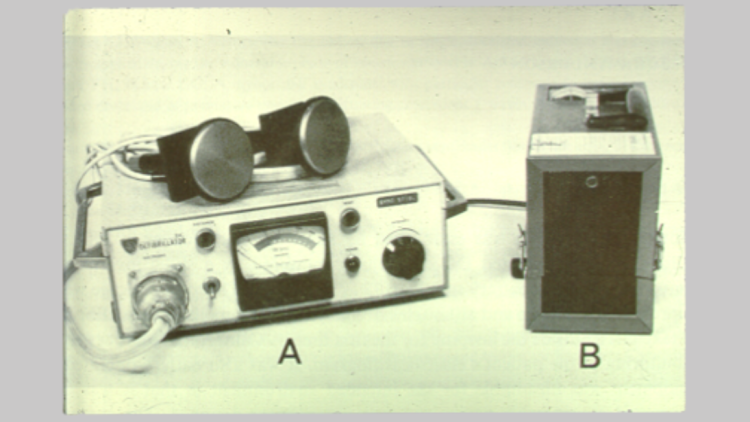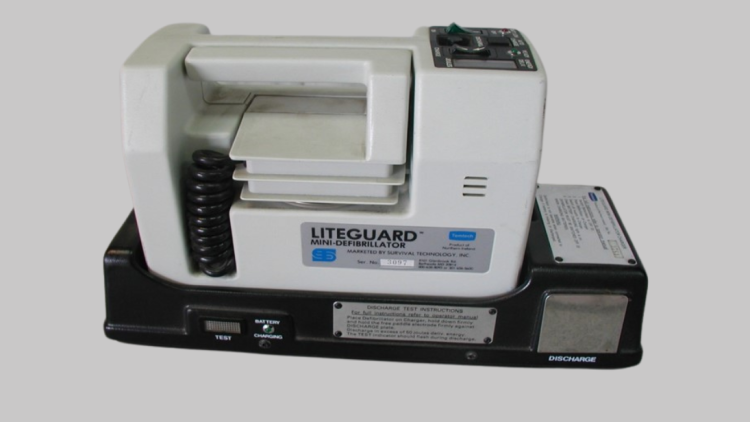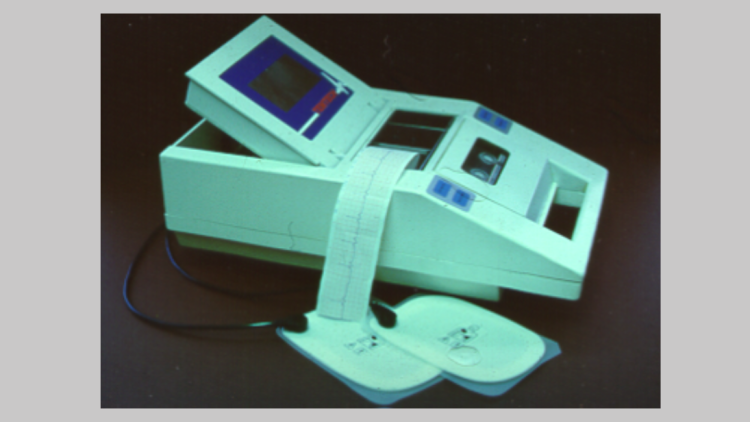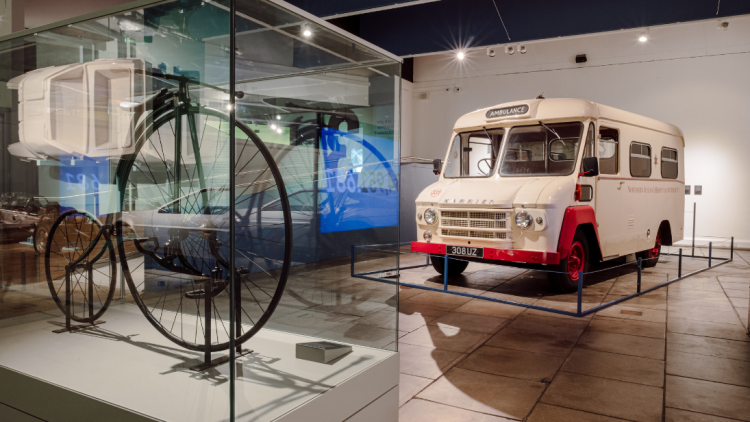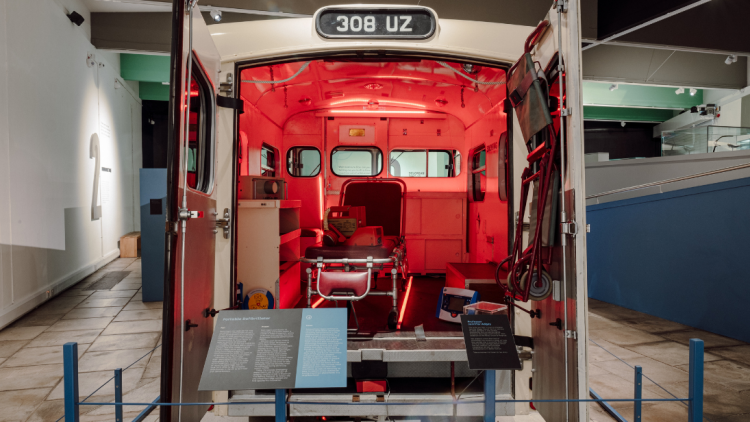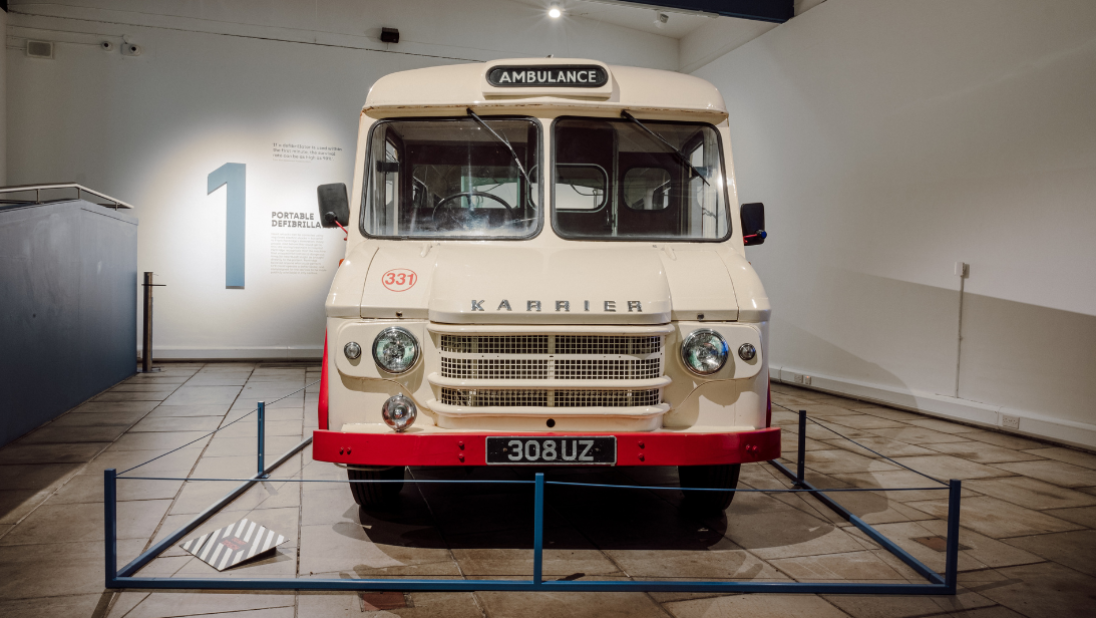
The Father of Emergency Medicine
Learn about the invention of the portable defibrillator and cardiac ambulance.
James Francis ‘Frank’ Pantridge
James Francis ‘Frank’ Pantridge was born in County Down in 1916, training as a doctor at Queen’s University Belfast.
His innovations in emergency medicine and treating heart problems have become the basis of healthcare response systems throughout the world.
A vocal supporter of the NHS throughout his time as a physician and researcher, Pantridge worked at Belfast’s Royal Victoria Hospital with the well-known surgeon Sir William Thompson. The two created a specialist unit to focus on heart-related treatment. Pantridge was at the forefront of developing a ‘flying squad’ care team, designed to allow pre-hospital emergency assistance, as well as refining plans for defibrillators in public places.
In collaboration with fellow Belfast-based medics Alfred Mawhinney, John Geddes and medical engineer John Anderson, the light and portable ‘Pantridge defibrillator’ - a portable defibrillator - was produced.
"I am thankful to Frank Pantridge, because without his invention of the portable defibrillator I would not be here today… I and thousands of others like me who have been treated by a portable defibrillator owe him my life."
Fabrice Muamba
Belfast Telegraph, 7 Jan 2016
Portable defibrillator and cardiac ambulance
Pantridge’s portable defibrillator was installed in Belfast ambulances as part of his development of a treatment system — now commonly termed the ‘Pantridge Plan’ — for mobile coronary care. In 1990, all frontline ambulances in the UK were fitted with defibrillators. Versions of the ‘Pantridge Plan’ have been adopted by countries throughout the world.
The evolution of the Portable defibrillator
Initially, two 12-volt car batteries provided the portable defibrillator’s current. The first model weighed a hefty 70kgs; some years later, using a miniature capacitor manufactured for NASA, he went on to design a far lighter instrument.
Devices such as the modern HeartSine range, developed by Pantridge’s former colleague John Anderson, extend Pantridge’s vision for portable defibrillation. These lightweight, long-lasting devices provide real-time visuals and audible feedback to treatment teams during emergencies, and save many lives around the world every day — one was used on the pitch to help footballer Fabrice Muamba when he collapsed during an FA Cup match in 2012.
Today, the process emergency departments use to treat out-of hospital cardiac arrest is known as ‘The Belfast Protocol’ to honour the city where Pantridge worked and first applied his innovation.
Karrier Ambulance
This ambulance was the first in the world to be fitted with Professor Pantridge’s portable defibrillator. It was part of the Karrier ambulance fleet and repurposed for the mobile unit dedicated to the treatment of people with serious or acute heart problems.
Initially, patients could only receive defibrillator treatment inside the ambulance as early devices were large and heavy. In 1968, Professor Anderson and Dr John Geddes created a lightweight portable version.
Professor John Anderson
Born in Belfast, Professor John Anderson was instrumental in the development of the portable defibrillator. In 1967 he joined the Royal Victoria Hospital as Head of Electronics. Working alongside Professor Pantridge, he sought to create a truly portable, lightweight device capable of running independently off a battery.

Anderson and Pantridge filed a joint patent for the improved design in 1974. By 1976 these innovative defibrillators developed in Northern Ireland were being sold worldwide.
As a determined entrepreneur, Anderson established several successful Northern Ireland based defibrillator companies including Temtech (1981) & HeartSine Technologies (1997).
Professor Jennifer Adgey
Professor Jennifer Adgey was of the first doctors to treat patients in the cardiac ambulance. She worked alongside Professor Pantridge and Professor John Anderson at the Royal Victoria Hospital. Her research within the field of cardiology has saved hundreds of lives. Now retired, she is currently Chairman of the Clinical Advisory Board which advises medical technologies corporation Stryker on future developments in defibrillation.
You Might Also Like
Professor Katrina Thompson
A chartered engineer and graduate in Aeronautical Engineering, she has over 30 years of industrial experience across the aerospace, telecommunications, and maritime sectors.
Professor Andriana Margariti
Professor Margariti and her team at Queens University, Belfast, are the first in the world to establish that the gene QKI-7 is what causes cardiovascular disease in diabetics.
The Shorland
The Shorland is an armoured patrol car that was used by the Royal Ulster Constabulary during the height of The Troubles.
